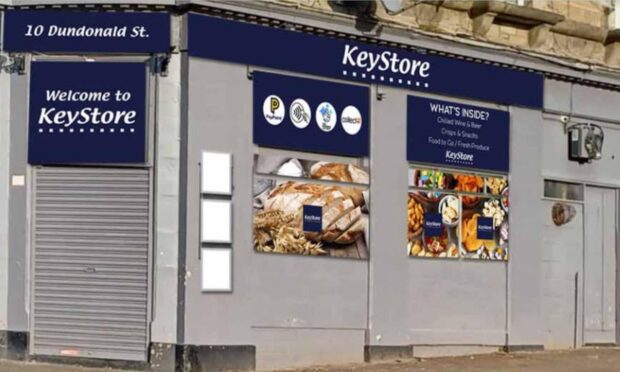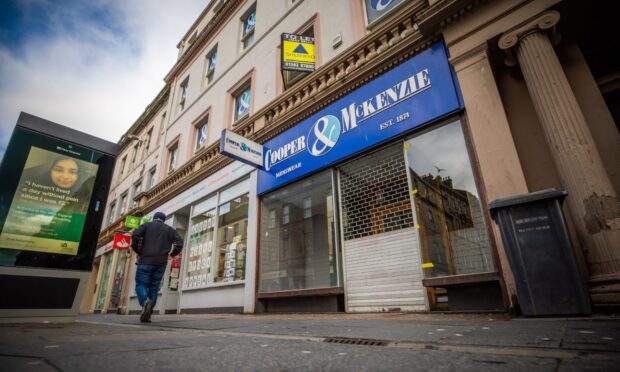Whatever the size of your business, whether you have one company vehicle or a fleet of 100, there are plenty of environmental benefits – and financial ones too – of switching from a petrol or diesel car, van or lorry to an all-electric one.
-
Some Courier online content is funded by outside parties. The revenue from this helps to sustain our independent news gathering. You will always know if you are reading paid-for material as it will be clearly labelled as “Partnership” on the site and on social media channels,
This can take two different forms.
“Presented by”
This means the content has been paid for and produced by the named advertiser.
“In partnership with”
This means the content has been paid for and approved by the named advertiser but written and edited by our own commercial content team.
And, as you will soon discover, there are many other incentives to consider too, such as tax benefits, so read on to find out reasons why you should make this green choice…
5 business benefits of switching to EVs
1. Tax benefit: For company cars, you can reduce employee ‘benefit in kind’ tax and do not have to pay vehicle tax on all EVs in your fleet.
2. Save money: Cost can be a barrier when it comes to EV uptake, but when it comes to total cost of ownership companies can soon see a reduction in costs for their fleet. With fuel costs continuing to rise, businesses can also make a saving here by switching to an electric fleet, and supporting the Drive Dundee Electric campaign.
3. Work towards emissions targets: By introducing a green fleet, you can reduce carbon emissions and spread an eco-friendly message across the business. A single electric car saves around 1.5 million grammes of CO2.
4. Boost client and customer opinions: By switching to an electric fleet, it demonstrates to clients and customers that your business sis a responsible and forward-thinking one, which can boost reputation.
5. Employee satisfaction: According to SWARCO, employees feel empowered, and feel that they are contributing towards positive change in reducing its carbon footprint. They also can reap the benefits of having workplace electric charging points.
SWARCO is embracing electric vehicles
One organisation which is understandably embracing electric vehicles is SWARCO. In fact, almost all (95%) of its Smart Charging’s fleet is electrified, with all senior managers and engineers driving electric vehicles.
A spokeswoman for SWARCO said: “SWARCO doesn’t just talk sustainability, we are totally committed to it, and acted on this with the electrification of our fleet.”
And Dundee City Council has continued to make positive electric changes to its fleet of vehicles. From cars to street sweepers and bin lorries, the council’s switched as it drives forward its plan to encourage the uptake of EVs across the city. For more read on….
Why we switched to an electric fleet – Dundee City Council
Case study: Dundee City Council
Dundee City Council now has 173 electric vehicles in its fleet, from cars to bin lorries and even street sweeper, making it one of the largest fleets of any local authority in the UK. Here, we catch up with the council’s fleet manager, Fraser Crichton, to tell us more…
When was the first electric vehicle introduced to the council, and why?
In 2011, Dundee City Council introduced 2 Peugeot Ions and 2 first generation Nissan Leaf’s. After an internal meeting, officers realised the extent to which this could help improve air quality in the city and how changes in transportation can have a positive effect on the environment.
What was the initial feedback?
As an early adopter of emerging technology the council moved at the pace of the industry, while the first versions of mass produced EVs were being designed, built and marketed. As manufacturing and marketing capabilities increased there has been a huge growth in the sector and the market has expanded to include a wide range of cars, vans, RCVs, minibuses and HGVs. The charging infrastructure has also developed at a similarly rapid pace to include a variety of different types of charger with renewable energy solutions being the latest advance to be brought in.
There are many benefits of switching – what are the main ones, in your opinion?
The environmental benefits of switching to zero emission vehicles are indisputable. Each petrol/diesel vehicle we replace with a fully electric helps the environment. The switch to the new technology has now seen council vehicles travel over 1.1million miles on pure electric.
This makes a significant difference to both the air quality in the city and the council’s carbon impact. An estimated 220,000 tonnes of CO2 has been saved just by using electric car and small vans. The council currently uses a blended funded model for financing its replacement programme where every vehicle goes through a rigorous whole life cost analysis before being replaced. This means that electric vehicles must measure up against traditional vehicles.
The council has developed the business case to enable it to introduce more electric vehicles due to the 30-35% reduction in maintenance costs of an electric vehicle compared with that of a diesel. Along with the reduction in fuel costs from 12-13p a mile to the current 2-3p a mile of electric vehicles, we have been able to continue to add to our fleet of electric vehicles at each appropriate replacement review.
RCVs and lorries go electric
Dundee City Council has recently introduced six fully electric RCVs and the statistics on fuel saving and CO2 are impressive. Looking at the electric RCVs, we will see a saving of 20,000kg of carbon dioxide (CO2) per vehicle.
When all 36 lorries in the fleet are electric it will equate to 720,000kg of CO2 not being released into the atmosphere. The fuel savings are also a huge consideration-replacing a single RCV saves 1% of the annual diesel fuel budget.
For more information about electric vehicles in Dundee, visit Drive Dundee Electric.













